Unmasking our Carbon and Climate Futures
Dr Pep Canadell is Chief Lead Investigator in the Climate Systems Hub, a Chief Research Scientist at CSIRO and Executive Director of the Global Carbon Project, a Future Earth Global Research Network. He presented a keynote at the recent Climate Adaptation 2023 conference in Adelaide on our (likely) carbon and climate futures.
Climate projections tell us that over the next half century, our planet will get hotter. If we want to understand changes from decade-to-decade, or year-to-year, we can look to the same climate models that run long-term projections.
Building a more accurate picture relies on different ‘inputs’ to our models: for example, observations of the climate system and the responses of the planet’s terrestrial ecosystems, oceans and atmosphere to greenhouse gas emissions being added or removed. We also need to ‘tell’ the climate model which emissions scenario trajectory we are taking. That relies on knowing whether government policies can accelerate the energy transformation at the rate required to reduce emissions and slow global warming.
Where are we headed?
We know that producing more accurate climate projections is possible but needs more certain information to make sense of our climate model inputs. A logical question, then is ‘which emission trajectory are we on?’ when it comes to pathways to reduce global greenhouse gas (GHG) emissions.
But the answer to the question is more complex.
The international governing body on climate change, the Intergovernmental Panel on Climate Change (IPCC) created a diverse set of plausible future GHG and climate scenarios for governments and society called shared socioeconomic pathways (SSPs). SSPs were designed to help decision and policymakers understand the consequences of any particular path.
One limitation to the IPCC is that, to avoid making assumptions on government actions around the world, the IPCC does not suggest a more likely scenario. That leaves practitioners and users of climate information in the difficult position of having to decide the level of mitigation and adaptation they need to plan for.
As a result, government agencies, private companies and economic sectors have been planning how to decarbonise to reach the goals of the Paris Agreement by choosing a manageable number of scenarios, a high and a low, a middle of the road, or what it was for over a decade, the worst-case scenario.
We cannot predict the future, but we can explore different lines of evidence to narrow down the number of possible futures that are most likely, for better planning. There are three lines of evidence: a) to track the remaining carbon budgets, b) to track current paths against the IPCC climate scenarios, and c) to track climate policies and their assumed impacts on GHG emissions.
Tracking the remaining carbon budget
The remaining carbon budget is how much CO₂ emissions we can still emit into the atmosphere to avoid, reach or pass a mean global temperature target. These budgets are built from the quasi-linear relationship between cumulative CO₂ emissions and global mean temperature. The trajectory that non-CO₂ GHG emission take (for example, methane and nitrous oxide), will make the carbon budget bigger or smaller, but as long as non-CO₂ emissions are declining, peak warming is determined by the cumulative CO₂ emissions.
As at the beginning of 2023, about 380 billion tons of CO₂ remain in the carbon budget for the 1.5 °C target. At current global CO₂ emissions of about 40 million tons of CO₂ per year, the climate system will reach 1.5 °C above pre-industrial levels in about nine years. At current CO₂ emissions, the climate system will reach 2 °C above pre-industrial levels in 30 years and later if we reduce total annual emissions.
From here one can infer that 1.5 °C will be soon reached and passed, while more than 30 years still gives a chance to society to fully decarbonize if rapid, large and sustained efforts are put in place. Of course, global temperature can continue to warm well above 2 °C.
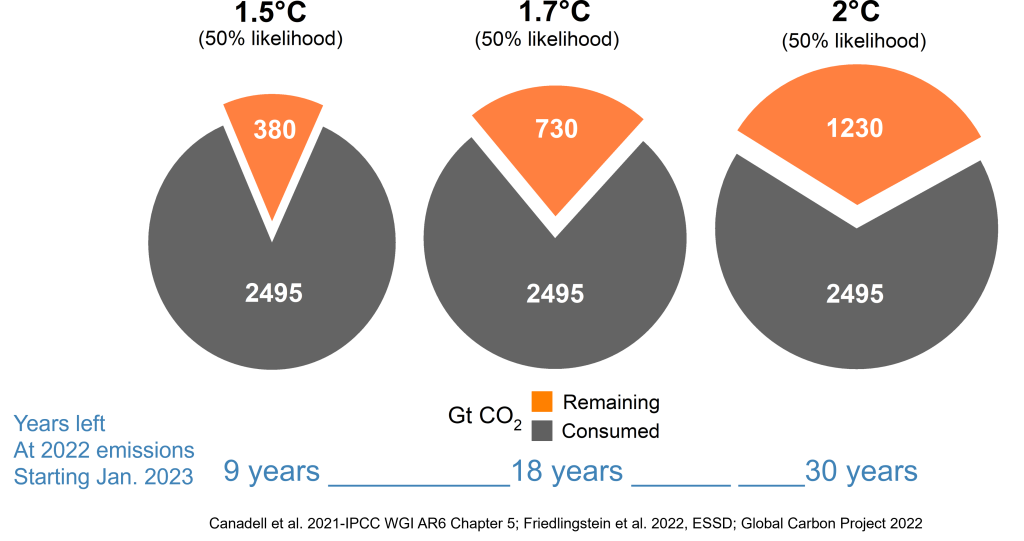
Tracking climate scenarios
We can simply take the historical observed emission trajectory plotted against the IPCC plausible future scenarios and check which scenario we are tracking. The global trajectories of emissions from the energy and land systems responsible for anthropogenic CO₂ emissions change from one decade to another within some limits. Fossil fuel emissions grew rapidly at 3% per year during the 2000s but have been hovering around 1% since. Thus, mean decadal emissions and rates of changes roots current trajectories to specific emissions scenarios.
The figure below shows the five illustrative scenarios (thick lines) of the IPCC consistent with 1.5 °C (ssp1-1.9) all the way to more than 4 °C (ssp5-8.5) by the end of this century, with multiple model runs (thin lines) following the same socioeconomic pathway narratives. The current recent historical emissions are consistent with a middle of the road pathway of emissions and global warming, and clearly neither tracking the most carbon intense pathways leading to more than 4 °C nor the least carbon intense ones consistent with the Paris Agreement of well below 2 °C.
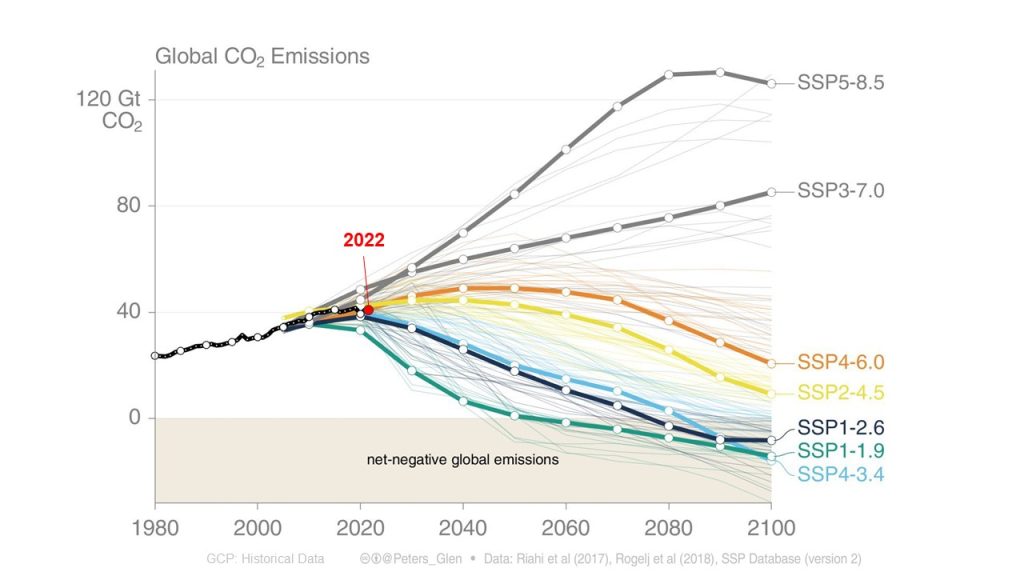
Tracking Climate Policies and Targets
Another way to narrow down the range of most likely climate futures is by analysing climate and energy policies and targets that governments around the world have implemented and committed, along with an assessment of how effective those policies might be. The GHG implication of many policies are subject to wide interpretation and many assumptions need to be made leading to a wide range of uncertainties. Nevertheless, it is a complementary approach to the ones described above.
The best estimate based on the policies in place is that the mean global temperature will be between 2.5 °C and 3.0 °C above pre-industrial levels by the end of the century. That is, a very hot world which would dangerously affect human health, the global economy and the world’s natural environments.
If we were to add all the pledges to reach net zero emissions from 2045 to 2065 at face value, to which more than 120 countries have committed, then global warming would be brought down below 2 °C by 2100, consistent with the Paris Agreement. However, net zero pledges are only legislated in a fraction of the countries such as the EU block, UK, Australia, Canada, Japan, but not in many other countries such as Russia and the USA, the latter group being weak assurances that might not be implemented in actuality. In fact, even if they are legislated, there is no guarantee either if or when those targets would be achieved.
Nevertheless, the analysis highlights how powerful the net zero targets are in bringing down GHG emissions, and therefore the opportunity and need for science and society at large to track the GHG evolution towards those targets.
There remain other uncertainties, associated with how well we know the climate system. So even if all policies were implemented successfully and net zero targets met as promised, there is still a significant probability (<20%) that global temperature goes beyond 2 °C by end of the century due to poorly known earth system processes such as the loss of CO₂ sink capacity (for example, due to the collapse of the Amazon), rapid increase of emissions from permafrost (mainly from boreal and tundra regions in Canada and Russia) or the rise of mega fires (particularly in boreal regions and temperate/arid regions such as Australia, Western US and the Mediterranean).
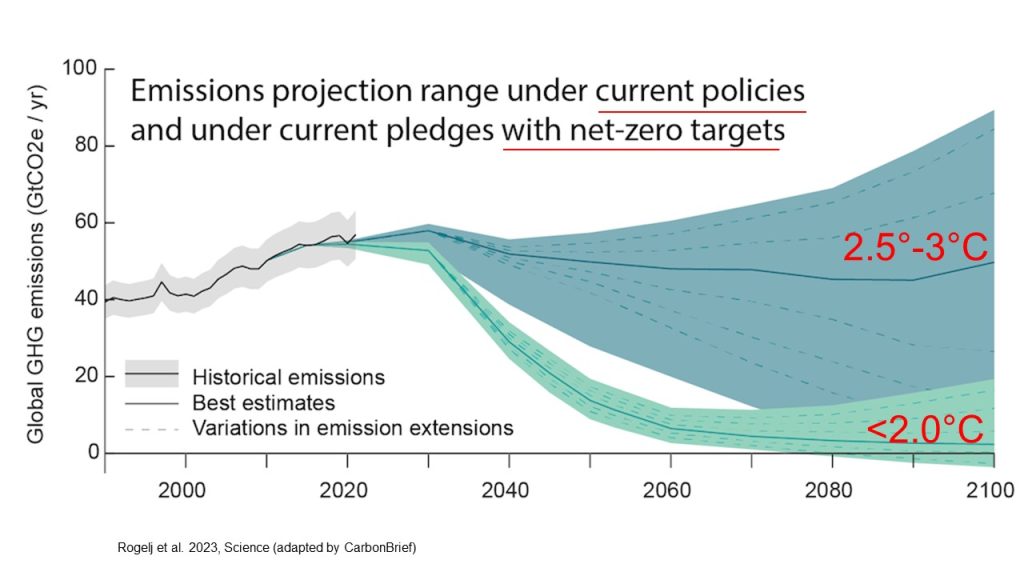
Beyond tracking climate scenarios to 2100
Beyond tracking the future of temperature, the worst climate impacts come from climate extremes that can result from an increase in the frequency and/or intensity of extreme weather events and compound events (multiple extremes on top of each other or one after the other). Being able to forecast climate extremes at the spatial scales that are important for humans and the environment are poorly represented in models, leading to large uncertainties when using model ensembles to understand the level of climate adaptation required. For instance, out of the few global climate/earth system models that can simulate wildfires with projections to 2100, only one model was able to simulate 1/3 of the magnitude of the emissions from the fires that occurred during the Black Summer of Australia in 2019-2020, the rest faired even poorer in their fire projections.
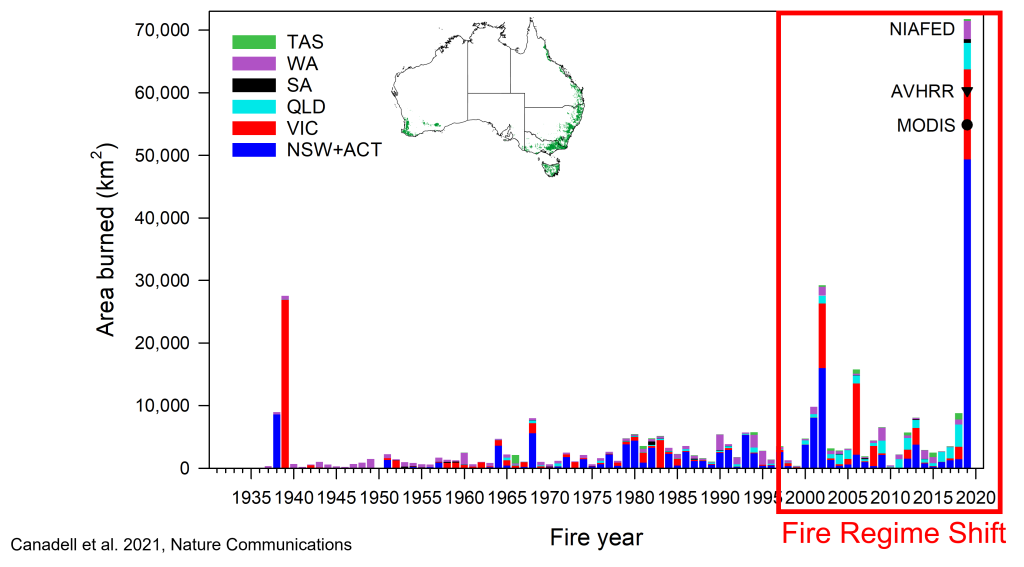
Finally, regardless which emission pathway we follow, there are impacts that will continue to grow well into the future. The most striking example is sea level rise which will continue for hundreds of years even after we reach net zero emissions. A successful Paris Agreement with climate stabilization at or below 2 °C will lead to close to an average of 2 m of sea level rise by 2300. This high sea level rise is among the best-known long-term impacts of climate change which will undoubtedly reshape the world’s coastlines and negatively impact tens of thousands of coastal cities and towns. Progressive adaptation might be a suitable approach for a number of impacts, while a longer-term view might be the most cost-effective approach for large adaptation infrastructure projects.
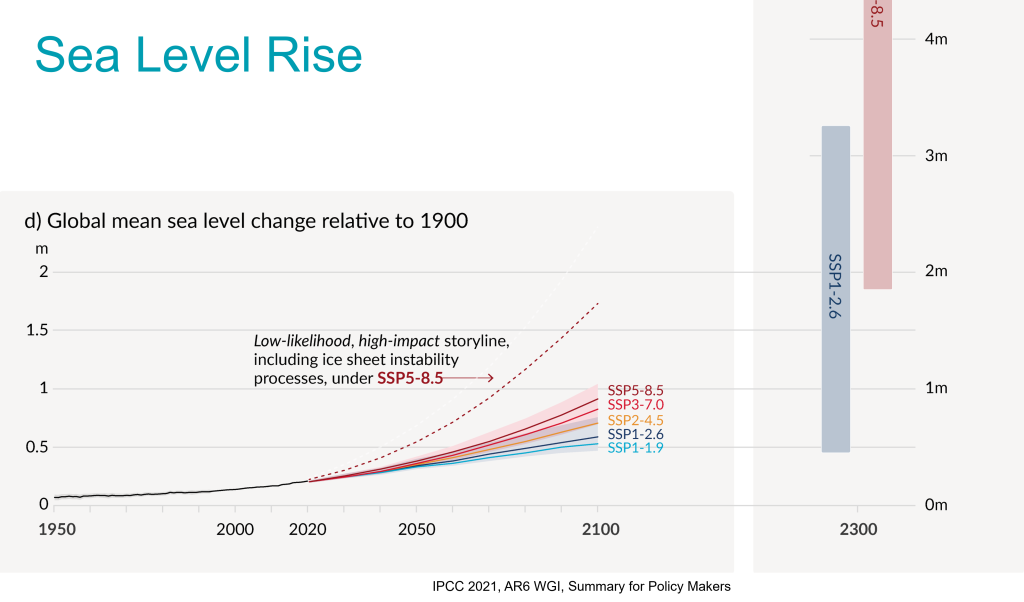
In summary, current GHG emission pathways are unlikely to lead to the worst-case scenario which we were tracking during the decade of 2000s. Reaching net zero emissions during this century is possible and would stop a continuation in the rise of global temperatures. However, we still need to prepare and adapt for the possibility of high temperatures (more than 3°C) and climate impacts, given the type, number and strength of current policy commitments, which are insufficient.
The broad range of possible futures will narrow over time as governments and industry develop more stringent climate policies. In the same way that science can set out climate scenarios, science also plays a fundamental role in tracking progress against those scenarios.
Finally, we need to consider the possibility of extreme events falling in the tail ends of model distributions that come from the inherent uncertainties of modeling future short-term weather dynamics. The impact of such extreme events would have profound impacts on humans and biodiversity, and therefore it is paramount we continue to improve the capacity to model and the risk assessment approaches we take.
Further reading:
Dr Canadell’s presentation at Climate Adaptation 2023 is available on the conference webpage.
Canadell JG, Meyer CP, Cook G, Dowdy A, Briggs PR, Knauer J, Pepler A, Haverd V (2021) Multi-decadal increase of forest burned area in Australia is linked to climate change. Nature Communications 12:6921.
Canadell JG, Poulter B, Bastos A, Ciais P, Hayes DJ, Thompson RL, Villalobos Y (2022) Balancing greenhouse gas sources and sinks: Inventories, budgets, and climate policy. In: Poulter B, Canadell JG, Hayes D, Thompson R (2022) Balancing Regional Greenhouse Gas Budgets. Elsevier, pp 3-28
Friedlingstein et al. 2022.Global Carbon Budget 2022
IPCC, 2021: Summary for Policymakers. In: Climate Change 2021: The Physical Science Basis. Contribution of Working Group I to the Sixth Assessment Report of the Intergovernmental Panel on Climate Change [Masson-Delmotte, V., P. Zhai, A. Pirani, S. L. Connors, C. Péan, S. Berger, N. Caud, Y. Chen, L. Goldfarb, M. I. Gomis, M. Huang, K. Leitzell, E. Lonnoy, J. B. R. Matthews, T. K. Maycock, T. Waterfield, O. Yelekçi, R. Yu and B. Zhou (eds.)]. Cambridge University Press.
Global Carbon Project (2023) Global Carbon Budget
Rogelj J, Taryn Fransen, Michel GJ den Elzen, Robin D Lamboll, Clea Schumer, Takeshi Kuramochi, Frederic Hans, Silke Mooldijk, Joana Portugal-Pereira (2023) Credibility gap in net-zero climate targets leaves world at high risk. Science 380: 1014-1016.
Sanderson B, Rosie A. Fisher (2020) A fiery wake-up call for climate science. Nature Climate Change 10: 175–177
DATE
September 11, 2023AUTHOR
Dr. Pep CanadellSHARE WITH YOUR NETWORK
RELATED POSTS
Future Earth Members Selected as Experts for IPCC Special Report on Cities
Sign the COP28 statement. The Science is Clear: We Need Net Zero Carbon Dioxide Emissions by 2050.
Global Carbon Project: Fossil Carbon Dioxide Emissions at Record High in 2023